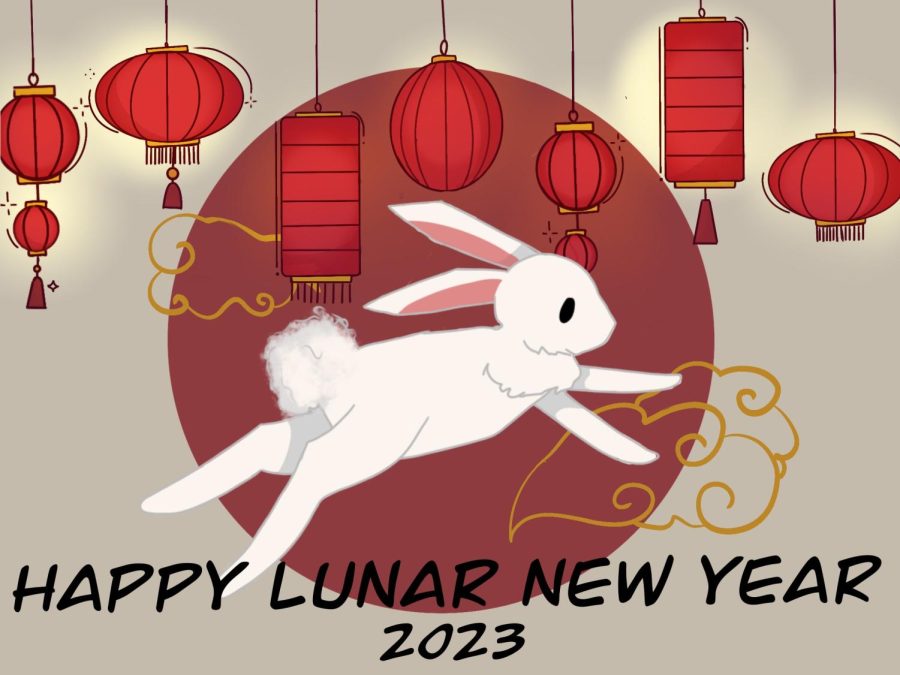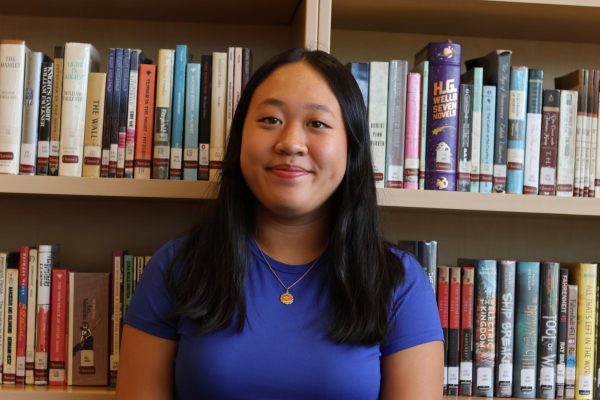Lunar New Year: A Holiday Celebrated Here and Throughout the World
Though it is commonly referred to as Chinese New Year, the term Lunar New Year includes all Asian cultures and countries.
January 25, 2023
Lunar New Year is one of the most important and special holidays for many Southern and Eastern Asian countries. It is a celebration of family, friends, and cultural heritage.
Lunar New Year is not celebrated on a set date, as it varies slightly year to year based on the lunar calendar. The date of the holiday is based on when the second new moon after the winter solstice takes place, and this year it was on Jan. 22.
The New Year’s celebration can go on for a long time, with some countries celebrating for as long as 15 days until the next full moon.
Even though it takes place during the winter season, Lunar New Year is also known as the Spring Festival, or Tết Nguyên Đán in Vietnamese, Chūnjié in Mandarin, Seollal in Korean, and Shōgatsu in Japanese, because the holiday is celebrated at the time in the year when the northern hemisphere starts to gradually warm up, with spring coming soon.
Within the La Salle community, students celebrate Lunar New Year in many different ways, both at school and with their families.
For junior Emmayln Dinh, the best part of celebrating the Lunar New Year is being able to get together with her family. Every year, her family cooks bánh chưng, a traditional Vietnamese sticky rice dish made and given during new years.
“It’s a really long process,” Dinh said. “But we get to share it with our other family members.”
Her family, as well as others in the La Salle community, celebrate the traditional giving of the red envelope filled with lucky money, known as 紅包 (hóngbāo) or lì xì. “My favorite part is getting the money from my family,” senior Raphel de Leon said.
Some La Salle families, like sophomore Daniel Pham’s, also celebrate the holiday together by playing games, such as bầu cua tôm cá, a traditional Vietnamese and Chinese gambling game played with three dice, where a player guesses where the dice will land on the board, and wins money for choosing correctly. “It is a lot of fun with my family,” Pham said.
Many families in the community also go to Mass to celebrate Lunar New Year with those in their church community. Usually, there are big celebrations hosted by the church that everyone can participate in with things like traditional dragon and lion dances and food. “After Mass, everyone thanks God for all you have for the New Years and for bringing good luck into the church,” junior Tina Nguyen said.
Students wear their country’s traditional outfits to their new year celebrations. “I normally wear my áo dài for special occasions like New Year’s, Christmas, and big church events,” Nguyen said. “When I wear it I feel really confident and proud that I get to honor my country.”
For Nguyen, Lunar New Year means, “preparing yourself for a good year and just having good thoughts coming into the new year.” It is a holiday to spend time with her family and friends to thank them for the blessing they have given her in the past year.
Last year, the AAPI club came together to celebrate Lunar New Year, inviting students who celebrate the holiday to wear their traditional outfits for the day and give chocolate coins in place of red envelopes. They had another celebration, where students were able to hang out with their friends while eating some Asian snacks.
This year due to the timing of finals, the AAPI club will be hosting a belated New Year’s celebration in the next couple of weeks, but the Innovation and Design Center recently celebrated the holiday this year by making lanterns and stickers, which were displayed around the school.
The origins of this celebration in the La salle community are rooted in years of history and tradition. For instance, around 4,000 years ago during the Shang Dynasty, the traditional Chinese Lunar calendar was historically a farming calendar and was used to divide the year into agricultural seasons. Taking form as the Spring Festival, the holiday became a time to celebrate agricultural society and its achievements in harvest, worship gods, and ask for a good harvest for the new year. As society evolved, so did the holiday. Today, Lunar New Year means many different things along with celebrating the past year’s harvest.
Each year in the Chinese Lunar calendar represents a different zodiac animal, with different characteristics assigned to them that are thought to reflect the personalities of the people born in those years. This year is the year of the rabbit — or the year of the cat on the Vietnamese calendar — and there are twelve different animals that the calendar rotates through: the rat, the ox, the tiger, the rabbit, the dragon, the snake, the horse, the goat, the monkey, the rooster, the dog, and the pig.
Each culture and country celebrates the Lunar New Year differently with a variety of traditions that symbolize prosperity, abundance, and togetherness. The holiday is filled with many family celebrations, including large gatherings and gift-giving of fruits, flowers, food and red envelopes filled with money to share both fortune from the past year and give as tokens of good fortune and blessings for the year ahead. There are large dinner celebrations, where traditional and meaningful foods are served — such as noodles for longevity, whole steamed fish for abundance, and sticky rice balls for togetherness — and religious ceremonies, where celebrants honor ancestors and thank gods for the blessings of the past year.
Even though each country celebrates differently, there are a few similar traditions that are celebrated throughout all of Asia.
Houses are cleaned before the new year to rid evil spirits and bad luck away from the family in hopes of good luck. Families decorate houses with colorful lanterns adorned with riddles and flowers to symbolize the coming of spring and wishes of prosperity for the new year.
Each country has their own traditional outfits that are worn specifically on Lunar New Year. Some include the ao dai from Vietnam, 한복, 韓服 (hanbok) or 조선옷, 朝鮮옷 (chosŏn-ot) in Korea, and the 旗袍 (qí páo) or 长衫 (cháng shān) in China. Many people in the U.S. wear their traditional outfits to represent their country and celebrate the Lunar New Year. Parents give their children a new set of clothing for them to wear on New Year’s Day which signifies the idea of change, new beginnings, and letting go of the old.
China, Japan, Korea, Taiwan and Vietnam all have a traditional dragon dance that is performed during their celebrations. In Asian cultures, the dragon symbolizes wisdom, power, and wealth, and is believed to bring good luck. In ancient times, stories portrayed a prolonged period of drought, where people prayed for rain with a dragon dance, causing rain to pour from the sky. Nowadays, dragon dances are performed during the new year as a means to chase away evil spirits and welcome in prosperous times.
The last day of celebration concludes with the Lantern Festival, where lanterns are handcrafted by family members and town artists to symbolize good fortune and love. These lanterns are used to celebrate and honor ancestors and to representent reconciliation, peace, and forgiveness.
Towns and cities have huge parades with many people holding lanterns, singing traditional songs for New Year’s, and performing dragon and lion dances. The streets are filled with bright and vibrant colors. Fireworks are set off to celebrate the coming of the new year and to scare evil spirits from coming into homes and villages.





